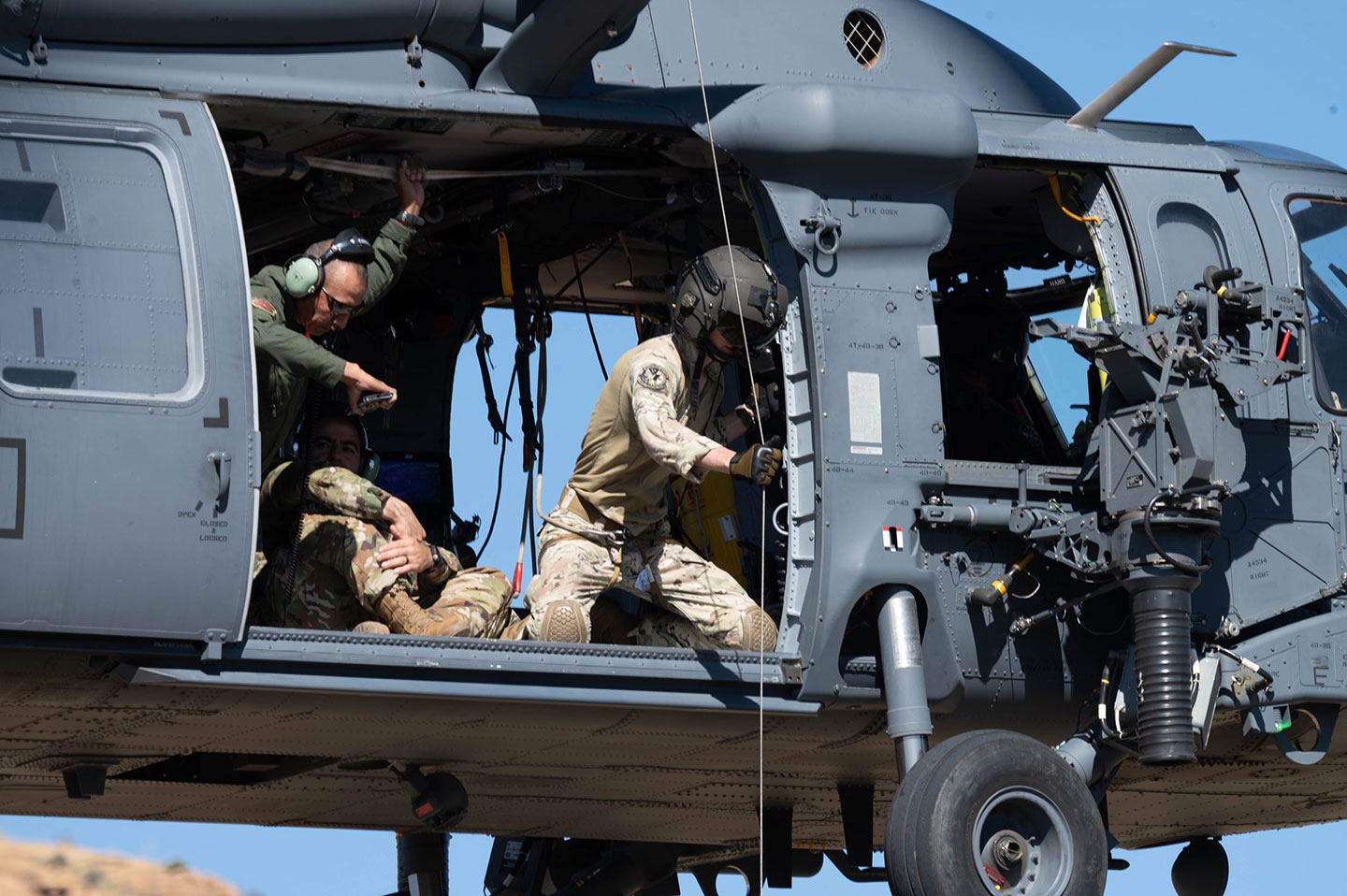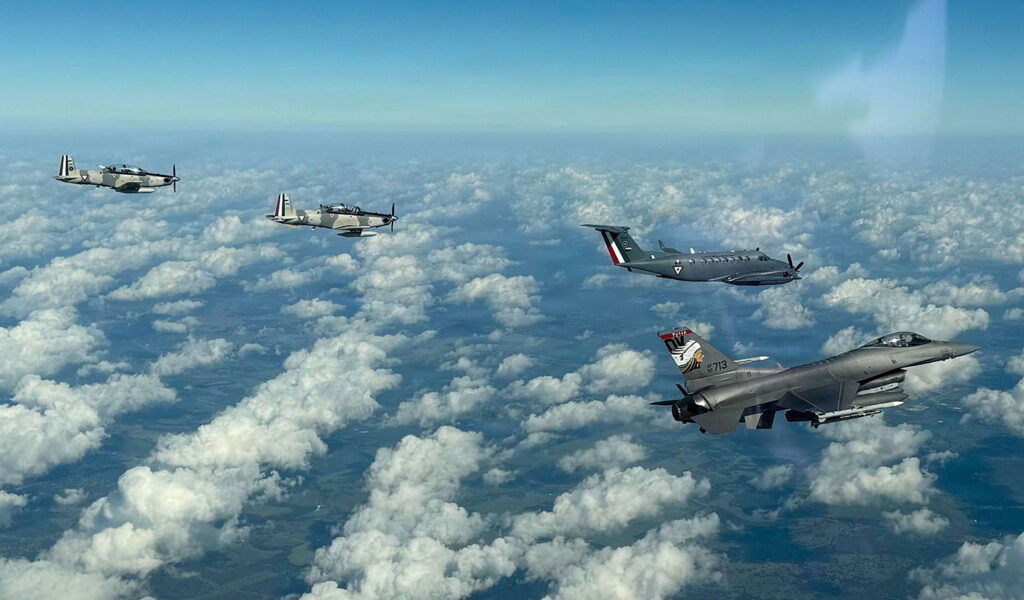Canada, Mexico and the United States launched the latest iteration of Amalgam Eagle, the cross-border air defense and search and rescue exercise that maintains North American air defenses operating with high levels of compatibility. The October 2025 exercise had an important time element: the 2026 FIFA World Cup. Each country will host matches of the world’s most-popular sport, certain to be watched by tens of millions with the accompanying threat potential.
Mexico’s Secretaría de la Defensa Nacional (DEFENSA), U.S. Northern Command (USNORTHCOM), the North American Aerospace Command (NORAD) — a Canada-U.S. bi-national command — and additional interagency partners from Mexico and the U.S. participated in the live-fly demonstration at multiple locations in Canada, Mexico and the U.S.
The impending World Cup prompted NORAD to issue aerospace warning and control efforts, including enforcement of temporary flight restrictions, to prepare for the matches. In another landmark, Amalgam Eagle 2025 also marked Canada’s first participation. The Canadian NORAD Region (CANR) “played a key role in exercising procedures and response protocols for potential air threats and emergencies in coordination with all participating security partners,” a U.S. Air Force news release stated.

The exercise improved operational compatibility between the militaries and streamlined communication, contributing to a more secure North American air space, the release stated. “AMALGAM EAGLE 2025 provided an exceptional opportunity to work with our Canadian Allies and Mexican partners and enhance integrated air defense capabilities across North America,” said Lt. Gen. Luke Ahmann, Commander of the Continental U.S. North American Aerospace Defense Command Region – First Air Force (Air Forces Northern & Air Forces Space) in the release. “Homeland defense in North America is an ever-changing requirement as threats continue to evolve, which makes the U.S.-Canada-Mexico collaboration in this iteration invaluable as we prepare for World Cup 2026.”
Amalgam Eagle involved more than 20 warplanes, including U.S. F-16 and F-15 fighters along with Canadian CF-18 warplanes. Mexican UH-60 and U.S. HH-60 helicopters took part as did Mexican T-6 Texan IIs and U.S. KC-135 refuelers, the release stated. A Canadian Learjet and a Mexican King Air jet acted as “Tracks of Interest” (TOIs) during the exercise. A TOI typically deviates from its flight plan, a tactic often used by threat agents or during emergencies. The military warplanes identified, intercepted and responded to the TOIs in various simulated scenarios along the U.S. southern and northern borders.
One of those scenarios included a TOI out of communication with Air Traffic Control crossing from Monterrey, Mexico, into U.S. airspace. Mexican T-6 Texans intercepted the plane before U.S. F-16s took over before landing in Houston, Texas. Simultaneously, another TOI crossed from North Vancouver, Canada into U.S. airspace. Canadian CF-18s intercepted the plane before handing off to U.S. F-15s.
The next day, a TOI departed Toledo, Ohio, heading into Canadian air space. Two U.S F-16s intercepted the plane before Canadian CF-18s took over. Meanwhile, the other TOI retraced its path from Houston back to Monterrey with the U.S. F-16s and Mexican T-6IIs trading their previous roles in the exercise. Each of these cities, except Toledo, will host World Cup matches.
Finally, Mexico and the U.S. conducted search and rescue operations in Mexico and the U.S. involving a car crash in the Arizona desert and mid-air emergencies in which the U.S Custom and Border Protection’s Air and Marine Operations Center in Riverside, California assisted with air support. Mexican and U.S. military representatives observed the exercises from each nation’s territory with Mexican observers attending events in Arizona, California and Houston while a U.S. representative visited Mexico’s flight control center in Mexico City, the National Center for Air Space Surveillance and Protection.
“By expanding AMALGAM EAGLE to include Canada, we’ve created a more robust and realistic training environment,” said Dan O’Boyle, an exercise planner for CONR-1AF (AFNORTH & AFSPACE) in the release. “This tri-national exercise is invaluable for enhancing compatibility and ensuring we can effectively address shared security concerns across North America. It strengthens our readiness and improves coordinated response protocols, which are critical for events like the World Cup.”

